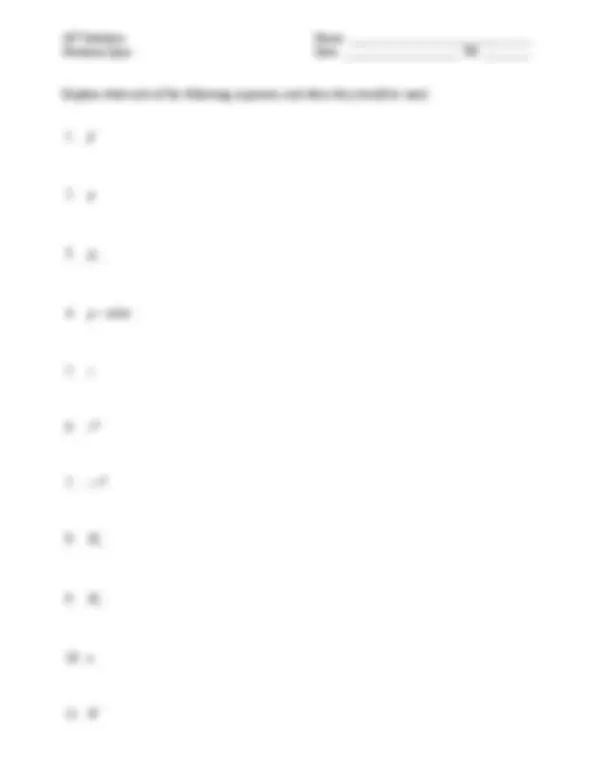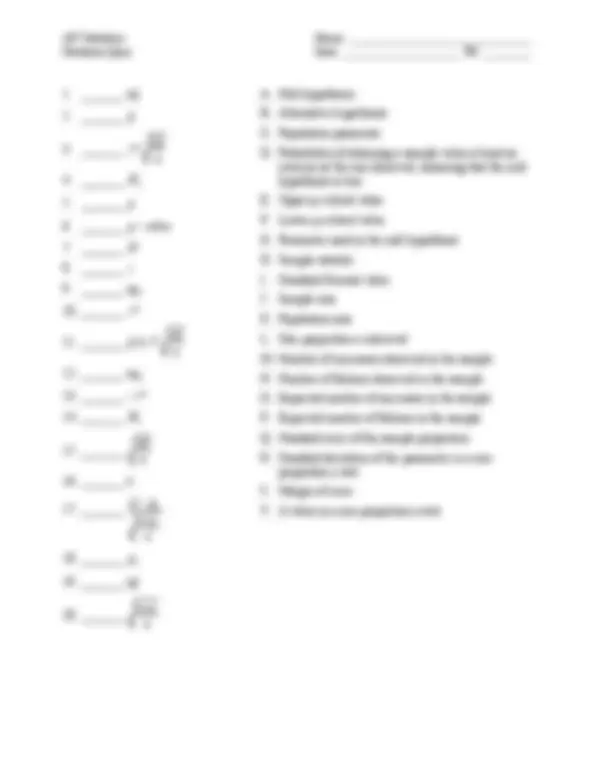





Study with the several resources on Docsity

Earn points by helping other students or get them with a premium plan


Prepare for your exams
Study with the several resources on Docsity

Earn points to download
Earn points by helping other students or get them with a premium plan
Community
Ask the community for help and clear up your study doubts
Discover the best universities in your country according to Docsity users
Free resources
Download our free guides on studying techniques, anxiety management strategies, and thesis advice from Docsity tutors
An overview of statistical notation, emphasizing the importance of using correct notation in statistics. It covers various statistical concepts, including means, standard deviations, regression lines, correlation, and random variables. Students are encouraged to learn the specific meaning of each letter and symbol in statistics, as well as the difference between population and sample statistics.
Typology: Slides
1 / 5

This page cannot be seen from the preview
Don't miss anything!




Notation is an important part of communication in mathematics. Using the correct notation for
statistical concepts is essential. BE CAREFUL! In statistics, unlike algebra, you are NOT free
to substitute another letter in place of standard notation. Each of the above letters has a specific
meaning in statistics. Also remember that “hats” and “bars” change those meanings. For
example,
, and
each have a very different meaning. Also, capitalizing a letter can
change its meaning.
First Semester Concepts:
2
and
i
2
and
2
Notation is an important part of communication in mathematics. Using the correct notation for
statistical concepts is essential. BE CAREFUL! In statistics, unlike algebra, you are NOT free
to substitute another letter in place of standard notation. Each of the above letters has a specific
meaning in statistics. Also remember that “hats” and “bars” change those meanings. For
example,
, and
each have a very different meaning. Also, capitalizing a letter can
change its meaning.
First Semester Concepts:
2
and
i
2
represents the second observed x - value, while
i
represents all possible x - values.
, and
represents the average y - value
2
2
2
2
X is a random variable and x is not
np
0
np
0
nq
pq
n
0 0
p q
n
pq
z
n
pq
p z
n
0
0 0
p p
p q
n
AP Statistics Name:
Notation Quiz Date: Pd:
nq
pq
z
n
A
0
np
pq
p z
n
0
nq
0
pq ˆ ˆ
n
0
0 0
p p
p q
n
0
p
np
0 0
p q
n
A. Null hypothesis
B. Alternative hypothesis
C. Population parameter
D. Probability of obtaining a sample value at least as
extreme as the one observed, assuming that the null
hypothesis is true
E. Upper-p critical value
F. Lower-p critical value
G. Parameter used in the null hypothesis
H. Sample statistic
I. Standard Normal value
J. Sample size
K. Population size
L. One-proportion z-intereval
M. Number of successes observed in the sample
N. Number of failures observed in the sample
O. Expected number of successes in the sample
P. Expected number of failures in the sample
Q. Standard error of the sample proportion
R. Standard deviation of the parameter in a one-
proportion z-test
S. Margin of error
T. Z-value in a one-proportion z-test